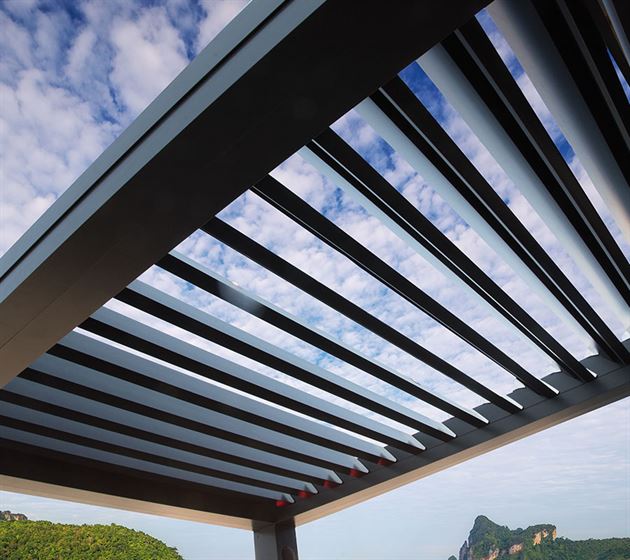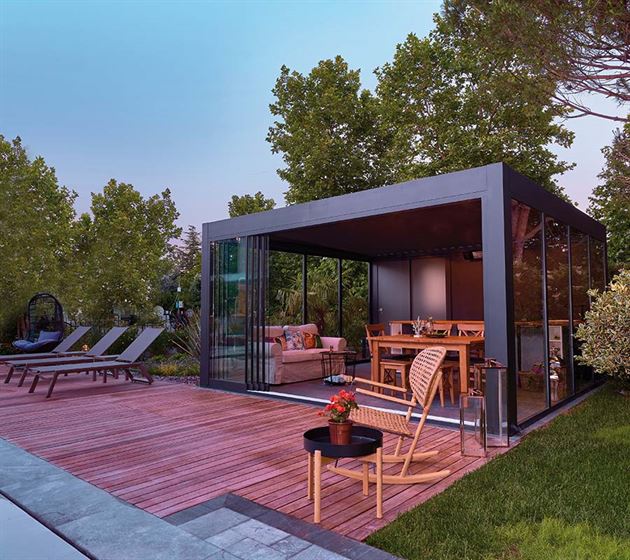What are bioclimatic pergolas?
Before getting to know what bioclimatic pergolas are, we would like to provide some context and talk about bioclimatic architecture and why it is so necessary for us to rethink our homes with criteria of sustainability, energy saving and comfort.
Bioclimatic architecture is based on the use of environmental conditions for the benefit of the needs of the users of a house. We should not treat the design of a house in a humid area in the same way as a house in a dry area, or, within the same area, houses with different orientations. It is a matter of carrying out personalised projects for each reality and working with materials and structures that provide maximum energy efficiency.
A bioclimatic house can achieve great savings and even become sustainable in its entirety.
From the very beginning, bioclimatic architecture has focused its efforts on the interior areas of houses in search of the longed-for energy efficiency, forgetting, in many cases, the exterior areas such as patios or terraces. This is where bioclimatic pergolas come in, the best tool to enjoy outdoor spaces all year round without leaving the philosophy of bioclimatic architecture aside.
Bioclimatic pergolas are aluminium or wooden structures with adjustable slats on the roof that move to regulate heat, light, humidity, rain and air movement, allowing light to pass through in winter and protection from the sun in summer, or the correct ventilation to help regulate the interior temperature throughout the year. There are also those that include a part of work and enclosures on the sides with glass curtains.
The pergolas that were only used to provide shade by means of climbing plants are becoming a thing of the past.




